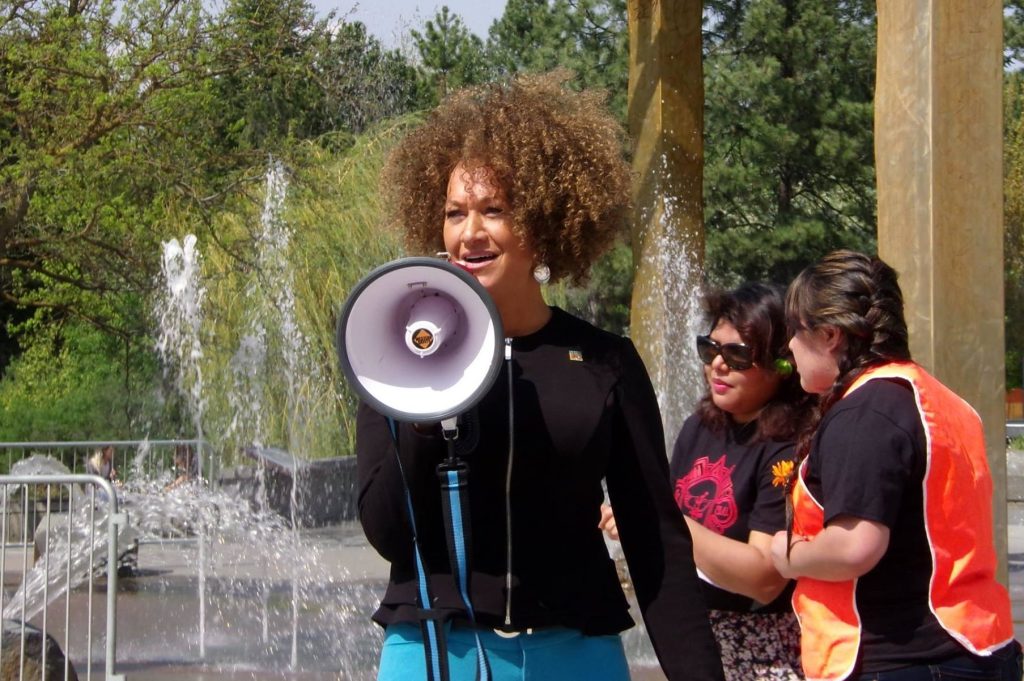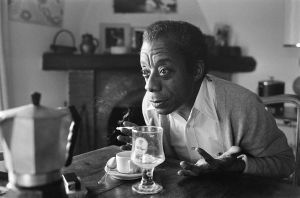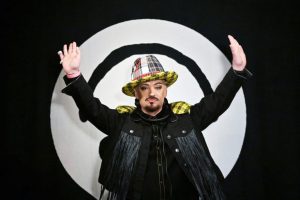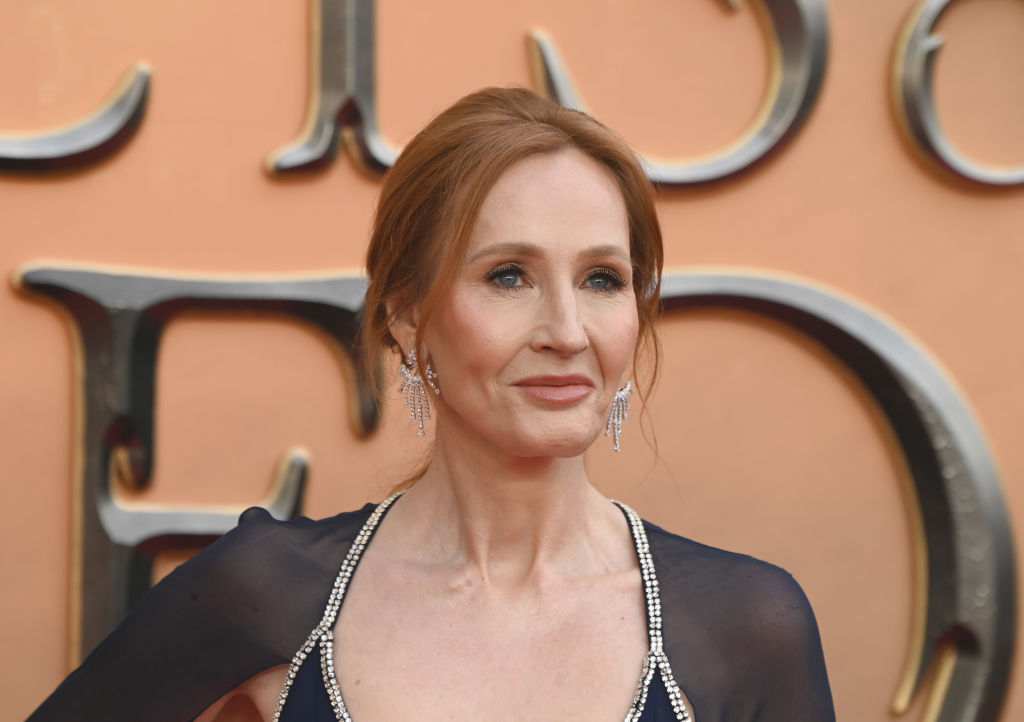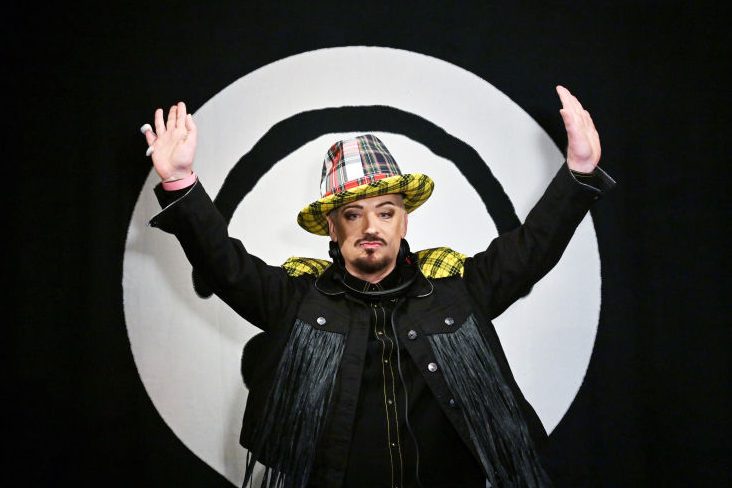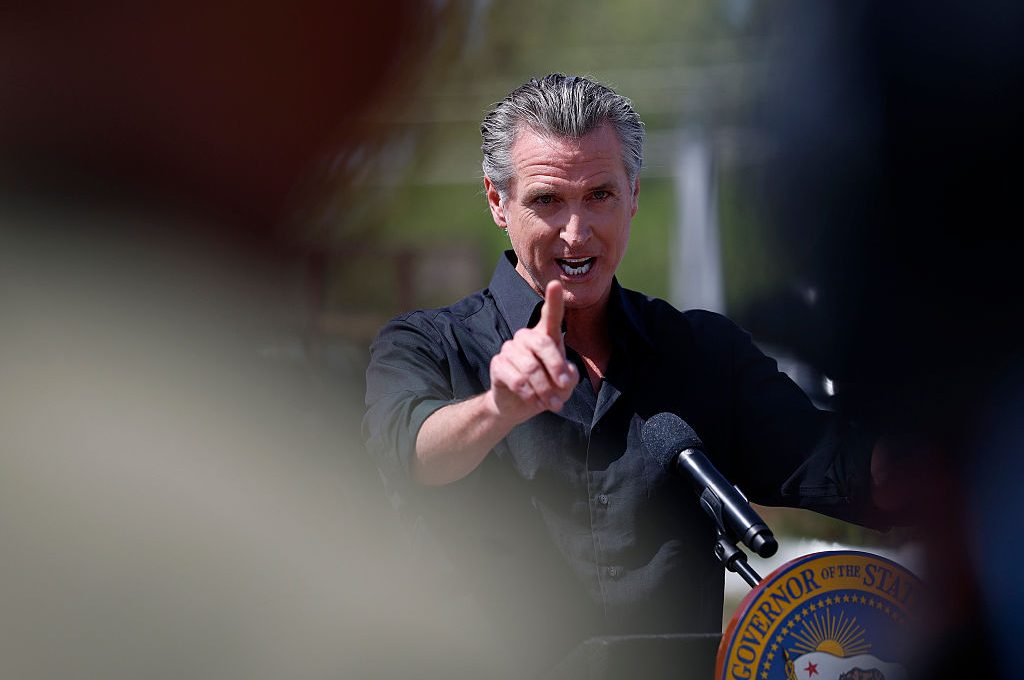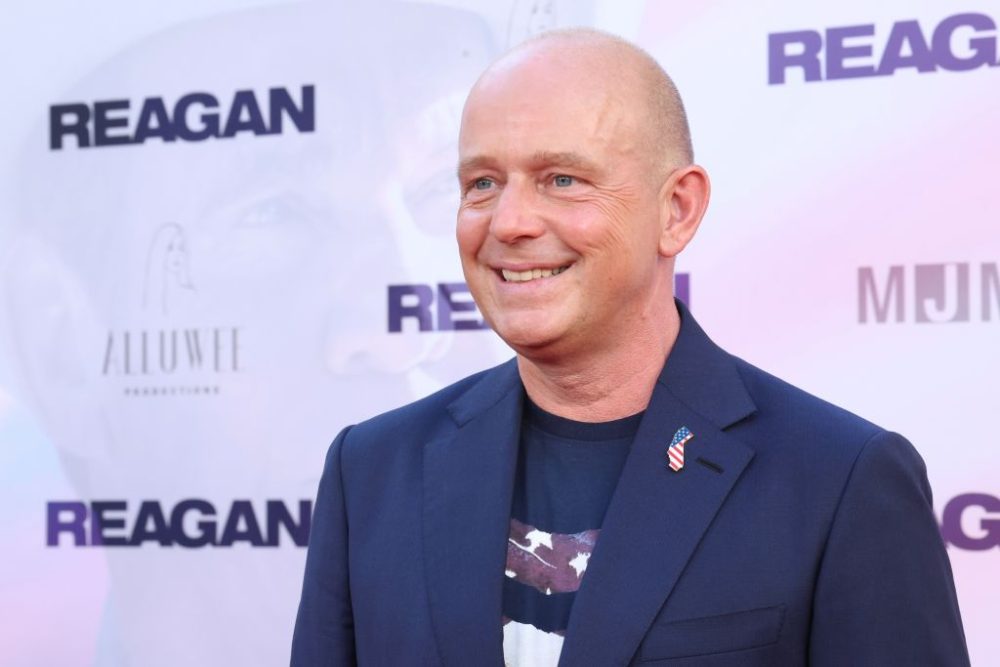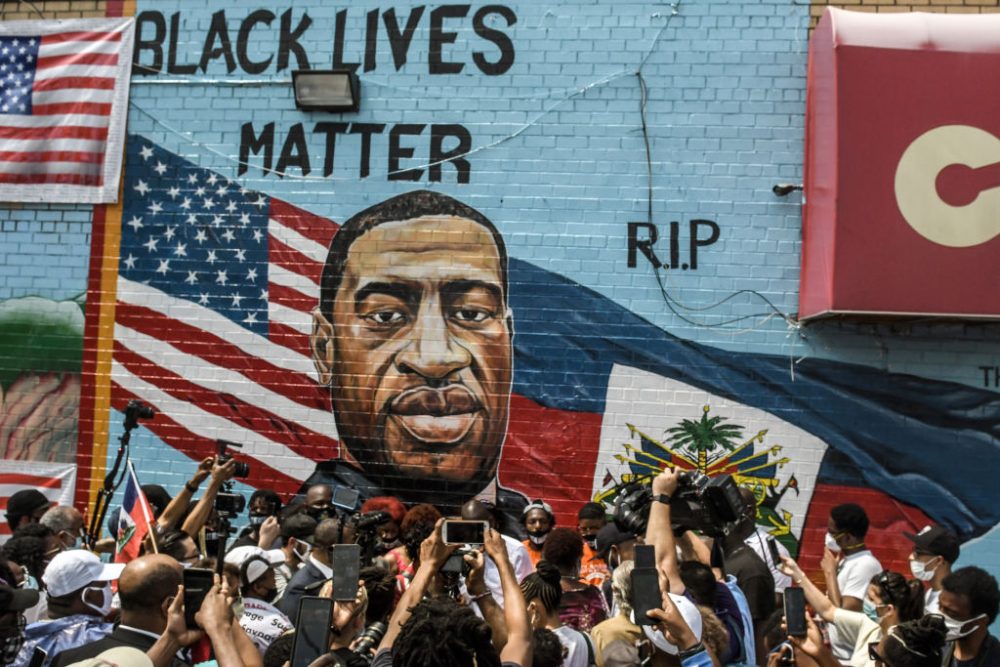As late as 2014, most Americans felt there was no need for the country to make any changes to address black-white inequality. 2015 was the year the future arrived. Donald Trump rode down the escalator. Ta-Nehisi Coates’s Between The World and Me was a publishing sensation. Freddie Gray died in Baltimore. The ‘Great Awokening’ — the journey of white liberals to the left of every other group in American society on racial issues — began.
And in Spokane, Washington, there was the case of Rachel Dolezal. Like the Trump campaign, or Coates’s writing, or Gray’s death, the inglorious circus that surrounded Dolezal, a white woman caught pretending to be black, X-rayed American race relations. Dolezal was not sui generis. Rather, she was a peculiarly avant-garde example of what Christopher Caldwell has since identified as the ‘burning regret’ many whites have that they aren’t black.
There is a straight line between 2015 and the Floydian summer of 2020, a clear continuum between the fires of Baltimore and the fires of Minneapolis. The ‘Great Awokening’ is mature at last: on the streets, in the bestseller lists, crafting corporate messaging. It’s been laying siege to Portland for almost one hundred nights.
The Floyd protests have no leaders. The movement’s demands are thin. Their achievement is to widely diffuse the leading moral illusion of our times: that Good and Evil are defined by race, and that race is an indispensable guide to moral action. This ‘narrative’ has become a substitute for religious belief, particularly for educated, otherwise atheistic white liberals. The quest for racial justice offers role, purpose and meaning to them. ‘White people seemed to believe they were at risk of inheriting racism,’ Caldwell wrote in The Age of Entitlement, published a few months before Floyd’s death, ‘and scrambled to separate not just themselves but their families, their bloodlines, from any taint of it.’
Caldwell was accurate. Over the summer, the most striking feature of the protests were ritualistic occasions where whites washed the feet of black protest organizers, or demanded that other whites show solidarity with the movement, or renounced their white privilege en masse. White flagellants — backs made up to look rawly scourged — appeared, attempting to exchange present pain for historical pain, to cleanse away their sins. If they announced their guilt, perhaps they could achieve innocence. How could this guilt be defined? You had to ‘do the work’. Try reading Coates’s books. Try reading Robin DiAngelo’s White Fragility or Ibram X. Kendi’s How to Be an Anti-Racist. And go out, protest.
Nobody wants to be guilty. Most of us desire to be innocent. America had plenty of intellectuals who could define racial guilt. But could they offer racial innocence?
Not really. For Coates and for Kendi, white people, or white supremacy, are uniquely responsible for police violence, wealth and health inequality, the monstrous cephalopod of global capitalism, and those ever-rising waves that nibble at the coastline. DiAngelo offers a queasy, dissoluble innocence that must be monitored through ‘ongoing self-awareness, continuing education, relationship building, and actual antiracist practice’. The policeman on your street corner is abolished, replaced with a policeman in your brain. Ultimately, Kendi wants to see a ‘Department of Anti-racism’ established. The DoA would ‘be empowered with disciplinary tools to wield over and against policymakers and public officials who do not voluntarily change their racist policy and ideas.’ Coates, famously, wants reparations for slavery.
As much as things have changed this summer, the three ‘solutions’ offered by some of the nation’s prominent anti-racist intellectuals — lifelong Calvinist practice, the establishment of anti-racist thought police, and reparations for slavery — are still far out in the offing, rather than washing up on the beach.
That’s where Rachel Dolezal comes in. She is a piteous, but in many ways predictable figure. In 2015 she was the president of her local chapter of the NAACP, chair of the Office of the Police Ombudsman Commission in Spokane, and a part-time instructor in Africana Studies at Eastern Washington University. But Dolezal was not a black woman. She had fled into blackness from what she said was an abusive family, and lied about being an African American. This was revealed on local television news, after which the story played out globally. She made excruciating talk show appearances, and endured boat-meet-iceberg interviews. Dolezal lost all of her jobs.
She was a curiosity, a wonder, a punchline. Effigy, not flesh and blood. She took her place alongside the bearded lady, the wolf boy, and the Octomom in the world-historical freak pantheon. Above all, for black commentators she was an object of morbid and righteous scrutiny. Icily, as if reviewing a Broadway stinker, Coates wrote that she was ‘neither novel nor original’. Jelani Cobb described her as ‘lying about a lie’, and argued that Dolezal was only possible because of the rape of slaves in the Deep South, generations ago. Jamilah Lemiuex said she was ‘an insult to Black women everywhere’. In Jezebel, Kara Brown simply asked: ‘Girl, what?’
They watched, and perhaps America did too, with incredulity and fury as Dolezal refused to back down. No, she wasn’t African American, that was admitted. But — and she insisted on this — she was black. ‘I know who I am,’ she said. 2015 was also the year Caitlyn Jenner appeared on the cover of Vanity Fair. Dolezal said — well, decided — that she was transracial. ‘Maybe 20 years from now,’ she said, ‘there’ll be a future that allows us to be who we really are.’ Her stubbornness made you believe, just about, that My Way was still the supreme American anthem.
So there was a great deal of paranoid fuss about Dolezal, a great deal of affected moral nausea. The level of criticism she received was indicative of people’s raw nerves touched and a society’s invisible lines crossed. People who sprint this far ahead of the curve are never welcome. Her deadpan weirdness put me in mind of Ludwig Wittgenstein’s famous proposition in Philosophical Investigations that ‘if a lion could speak, we could not understand him’ — it would be speaking in a tongue alien to our own.
All the antiracist intellectuals insisted that race wasn’t real. In the words of Coates, ‘race is the child of racism, not the father’. But here was somebody who truly acted as if race was a social construct, and they were furious about it. The preeminent voices in America’s racial ‘conversation’ were angrily confused by Dolezal. Was race a terrible fact, biological, coldly running along Darwinian grooves? Or was it a fugazi, a wazi, a woozi — fairy dust that never landed — no matter, not on the elemental chart, not real. They usually wrote as if it was a social construct. Race, they argued, was dreamed up by 18th-century white dudes like David Hume between an Edinburgh lunch and an Edinburgh dinner. Race was an idle and lackluster speculation, one that aberrantly hardened into a system of power and control after a few sick lurches of history. But Dolezal made them write as if race, as if blackness, was a mystical essence with in-built specialties and vulnerabilities. In lambasting her they demonstrated curious eagerness to police the color line. What did it mean? Perhaps some antiracists are very attached to the concept of race. They need its cyclical ‘narratives’, its accumulated traumas, its unfalsifiable theories. At the low level, right down in the cavities, they are not ready to give up the drug of race, and all its transcendent highs and deadly comedowns.
In 2020, Dolezal’s story could not be more relevant to the white liberals who have spent all summer protesting. They are under enormous psychic strain. Trump, and you have to assume, a supermajority of his supporters, are not going to be taking personal responsibility for the charges of the antiracists. The sins of America fall on the white liberals (especially women) instead. What are they going to do with all that guilt? Where will the thirst for a moral justification for their lives take them?
We know where it took Dolezal. She was, as Caldwell put it, ‘following society’s most cherished anti-racist slogans to their logical anti-racist conclusion’. Will the foot soldiers of the Great Awokening follow her, one day, soon, up the gangway, up into the ark of the future? An Omni-America: not at all post-racial, but transcendentally transracial. An America — at long last — comfortable in its own skin, because it happily sheds its skin whenever it feels like it. There is a model. The trans movement provides a precedent and a plan of action to any who go down this path. (Or maybe it doesn’t.)
[special_offer]
Rachel Dolezal might be seen as someone hysterically ahead of her time. Never a pleasant thing to be. In previous centuries that would get you a turn in the gibbet, or on the bonfire. Dolezal had our equivalent: a turn in the digital stocks, nasty articles in the Daily Mail, and every villager’s account in the land lobbing a pixelated cabbage at her.
The New York Post did a short interview — you have to assume as a joke — with Dolezal in July. Like any Good white woman, like any Good black woman, she is for defunding the police, reparations, and defacing racist monuments. Racially, she now says she identifies as ‘human’, but sees herself as culturally ‘black’.
She plans to move to Tucson to be closer to her son, who studies at UofA. She hopes for a fresh start.



